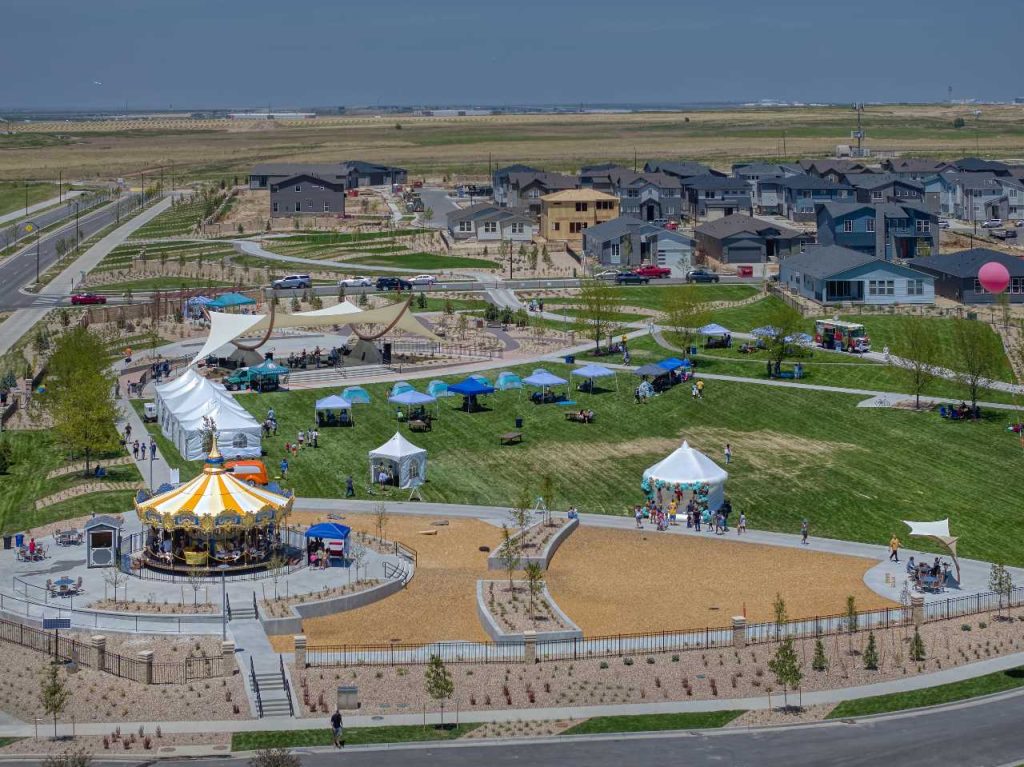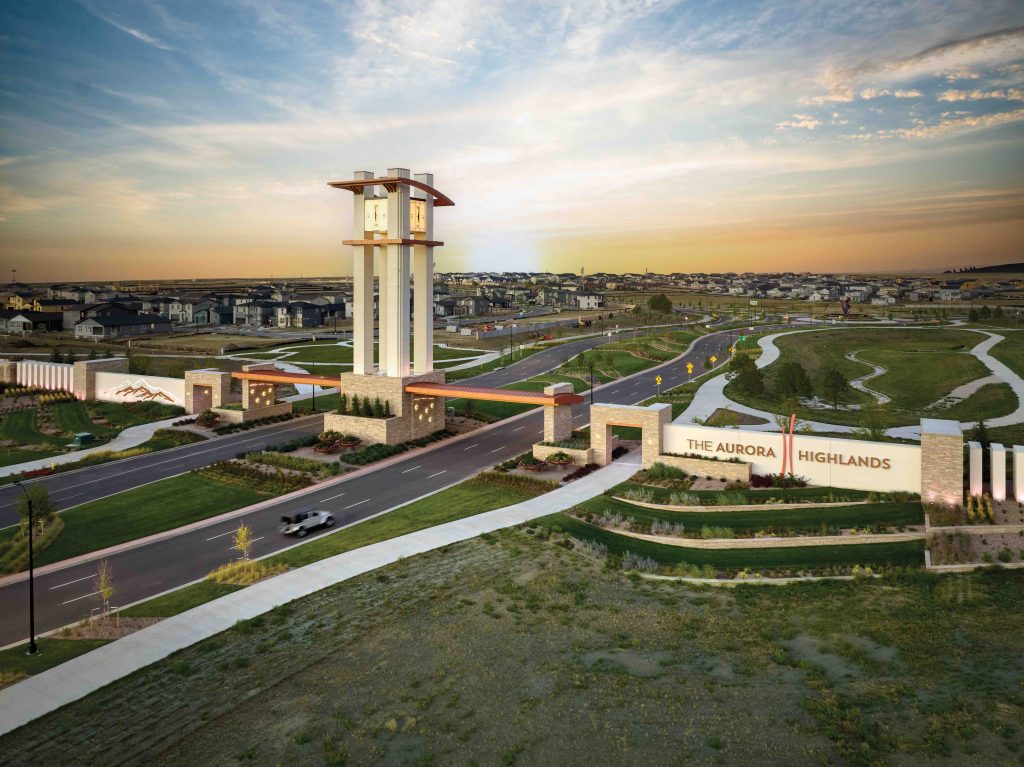Press Release
DENVER (November 17, 2023) – The Aurora Highlands took home three awards at the Denver MAME Awards on November 11th. The MAME Awards are hosted by the Home Builders Association (HBA) of Metro Denver and honors professionals in Denver’s residential building, design and real estate industry. The awards ceremony was held at the Hyatt Regency Denver at Colorado Convention Center. The MAME Awards represent Denver housing industry professionals’ recognition and appreciation of The Aurora Highlands’ accomplishments over the past year.
The Aurora Highlands is currently the Denver Metro Area’s largest master-planned community under development and will expand the metro area to the east including adding 12,500 homes and four new schools to Aurora Public Schools.
The Aurora Highlands won the following awards:
- Best Special Promotion – As one of the most successful grand opening events for a master-planned community in the state of Colorado, The Aurora Highlands was thrilled to get recognition in this category. More than 2,000 people visited the community for food, fun and tours of model homes.

- Best Signage – Details are important to The Aurora Highlands, and winning this award for the community’s signage is an honor. A massive, 110-foot-tall clocktower greets visitors at the community’s entrance, inspired by similar monuments in Europe and early America that could be seen from miles away. The team at The Aurora Highlands even decorates the clocktower for every holiday.

- Best Community Amenity Feature – Hogan Park at Highlands Creek is a public, two-mile, 100-acre park that has gained local, national and international attention for its unique art installations, most recently its sculpture Umi. The purpose of the park is to offer a beautiful place where everyone is welcome. Currently, the public can enjoy the scenic overlooks and walking paths that lead them to various installations from world-renowned artists. In the future, the park will offer a zip line, slides, linear challenge course, gardens and more.

“We are absolutely thrilled to have our hard work and dedication to building a vibrant, inclusive community recognized with these prestigious awards,” Carla Ferreira, director of on-site development at The Aurora Highlands, said. “Winning in categories like Best Special Promotion, Best Signage and Best Community Amenity Feature at the Denver MAME Awards is a testament to the passion and creativity we pour into The Aurora Highlands every day. It’s an honor to see our efforts in creating a space where art, nature and community converge being celebrated. This recognition fuels our commitment to continue offering exceptional living experiences in the Denver Metro Area.”
RELATED: Homes Provide More Than Shelter
About The Aurora Highlands
Located between the mountains and the plains, The Aurora Highlands 4,000-acre master planned community expands the metro area to the east near DIA. The community will feature every category of housing from attached to multi-family and single-family residences, providing people with more than 12,500 housing units. The community will also incorporate Colorado’s active lifestyle with recreation centers and over 21 miles of trials, 12 neighborhood parks and 20 pocket parks. Hogan Park at Highlands Creek in particular will feature public art installations, performance plazas, climbing walls, a zip line, embankment slides and gardens in its nearly 100-acre space. Aurora Public Schools will also build four new schools in the community, the first of which opened in 2023. For more information about The Aurora Highlands, please visit The Aurora Highlands website or call the Visitor Center at 720-356-0123.








